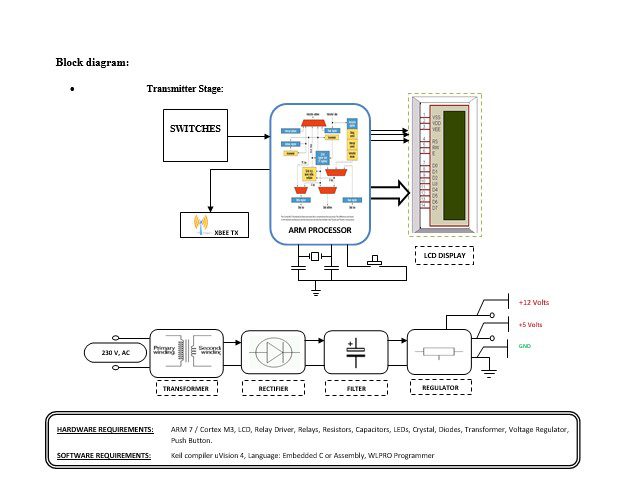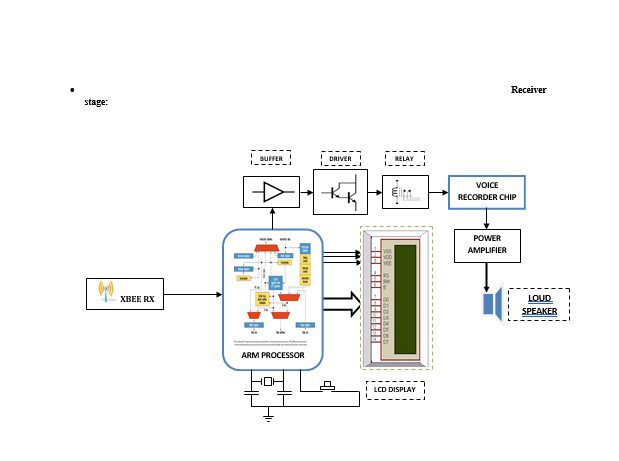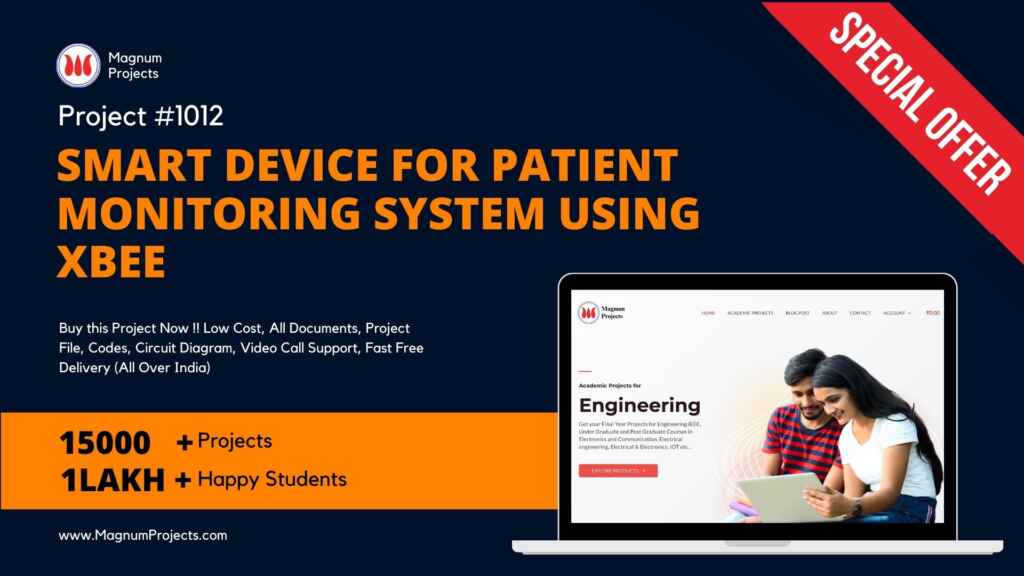Table of Contents
Introduction:


This project is used to scan the complete parameters of a person in an ICU ward through Zigbee Technology. The name “Zigbee” is derived from the erratic zigging patterns many bees make between flowers when collecting pollen. This is evocative of the invisible webs of connections existing in a fully wireless environment. Zigbee is the name of a specification for a suite of high-level communication protocols using small, low-power digital radios based on the IEEE 802.15.4 standard for wireless personal area networks (WPANs), such as wireless headphones connecting with cell phones via short-range radio. The technology is intended to be simpler and cheaper than other WPANs, such as Bluetooth. Zigbee is targeted at radio-frequency (RF) applications that require a low data rate, long battery life, and secure networking.
This Patient Monitoring System Using Zigbeewas developed with embedded system Technology, this electronic system collects the data about a patient within predefined time intervals using different switches for different requirements of the patient and will transmit the data via Zigbee. After receiving, at the receiver, an appropriate voice announcement will be done for the pressed switch to indicate the patient’s requirements.




Block diagram explanation:
Power supply unit:
This section needs two voltages viz., +12 V & +5 V, as working voltages. Hence specially designed power supply is constructed to get regulated power supplies.
Switches:
In electrical engineering, a switch is an electrical component that can break an electrical circuit, interrupting the current or diverting it from one conductor to another. A switch may be directly manipulated by a human as a control signal to a system. Automatically operated switches can be used to control the motions of machines.
ARM processor:
ARM is a computer processor-based RISC architecture. A RISC-based computer design approach means ARM processors require significantly fewer transistors than typical processors in average computers. This approach reduces costs, heat, and power use. The low power consumption of ARM processors has made them very popular:
The ARM architecture (32-bit) is the most widely used in mobile devices, and the most popular 32-bit one in embedded systems.
Buffers:
Buffers do not affect the logical state of a digital signal (i.e. a logic 1 input results in a logic 1 output whereas logic 0 input results in a logic 0 output). Buffers are normally used to provide extra current drive at the output but can also be used to regularize the logic present at an interface.
Drivers:
This section is used to drive the relay where the output is the complement of input which is applied to the drive but the current will be amplified
Relays:
It is an electromagnetic device that is used to drive the load connected across the relay and the o/p of the relay can be connected to the controller or load for further processing.
Voice recorder:
The aPR33A series are powerful audio processors along with high-performance audio analog-to-digital converters (ADCs) and digital-to-analog converters (DACs). The aPR33A series is a fully integrated solution offering high performance and unparalleled integration with analog input, digital processing, and analog output functionality. High-quality audio/voice systems with lower bill-of-material costs can be implemented with the aPR33A series because of its integrated analog data converters and a full suite of quality-enhancing features such as sample-rate converters.
In this messages must be recorded or played back sequentially, specially designed for simple key triggers, the user can record and playback the message. Meanwhile, this mode provides a power-management system.
Zigbee Technology:
ZigBee is a specification for a suite of high-level communication protocols used to create personal area networks built from small, low-power digital radios. ZigBee is based on an IEEE 802.15 standard. Though low-powered, ZigBee devices can transmit data over long distances by passing data through intermediate devices to reach more distant ones, creating a mesh network
Methodology:
The project consists of a transmitter for each of the patients and a single receiver in the doctor’s monitoring room.
The patient circuit consists of a switches unit consisting of appropriate switches, a controller, and a transmitter. If the switch is pressed, the pressed switch will indicate the requirement of the patient. The signal from the switch is given to the controller. Then the controller will indicate the patient requirement via display and the same information is transmitted via Zigbee.
On the doctor’s end, the receiver is common for all the transmitted signals. The signal is received in the receiver via Zigbee. The received signal is given to the ARM to present corresponding voice information to indicate exactly the patient’s requirement.
Advantages:
- A place in the hospital where very ill patients are monitored very closely.
- The patients in the ICU need constant monitoring of their requirements. This project is a working model, which incorporates switches to monitor the patient’s requirements continuously.
- Any abnormality felt by the patient is indicated by a voice signal.
- The patients can be analyzed by doctors in any part of the hospital wherever they are.
- Thus it reduces the workload of nurses and also gives more accurate results.
- The patient-staff ratio is very low, so this kind of advanced equipment is necessary.
Disadvantages:
- One-time investment cost.
- The patient has to press the switches manually to convey the message to the receiver, but with the help of a voice-activated system, we can overcome this disadvantage.
Applications:
- Hospitals in monitoring the requirements of the patients continually.
- By using this system the patients can be analyzed by doctors in any part of the hospital.
- Used to transfer the information from the transmitter side to the receiver side wirelessly.




